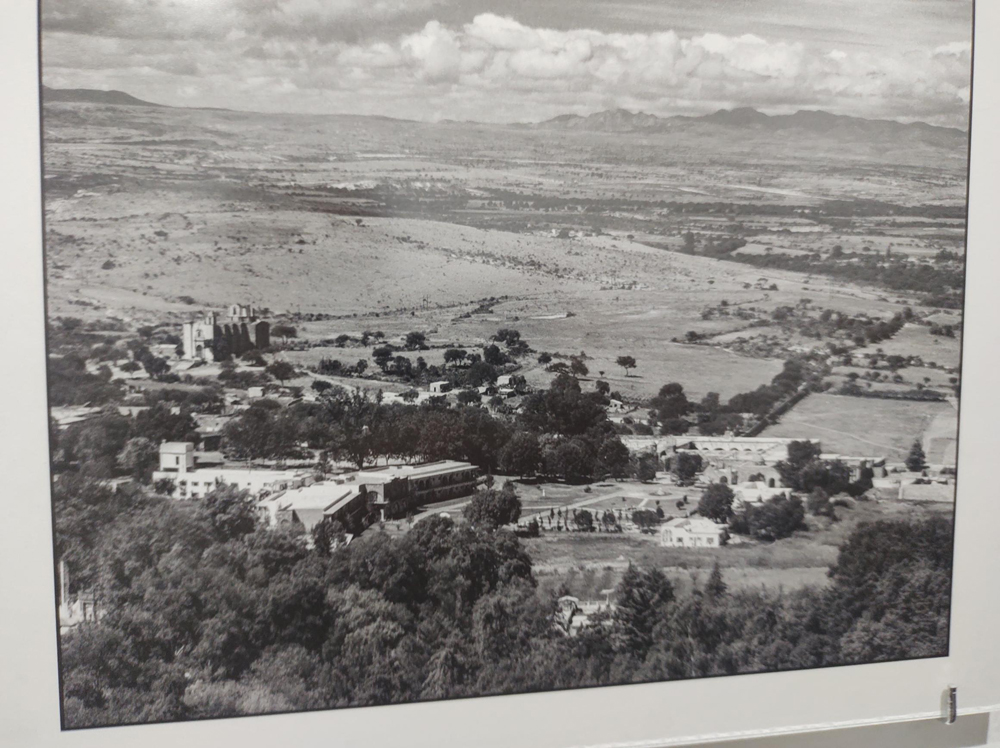
October 8, 2023
Dr. David Fialk, Editor / Publisher
The opening of the exhibition was at the Instituto Allende, in one of the not inconsequential rooms off the wide, covered promenade surrounding its magnificent central courtyard. When it was built, during the heyday of the town, the Instituto was already out of town, although just down the hill from what is now el Centro, the historic center. The impressive, extensive structure and grounds (once taking up the whole block?) was the summer residence of the De la Canal family. There, year-round, they kept their horses, and probably some chickens, a cow and some goats.
Like the rest of the town the Instituto fell into ruin, or at least disuse, after the silver market collapsed in the 1890s. The mines, 100 miles north in Real de Catorce, having filled with water or their veins too weak to make further excavation profitable, were abandoned. San Miguel de Allende, owing its prominent position on the Camino Real de Tierra Adentro, the route from the mines to the port of Veracruz, was then also abandoned.

Surrounded by mountain peaks, literally enclosed in an alpine bowl, the mining town of Real de Catorce still today has as its chief access a long, single-lane tunnel. The catorce of its name, meaning "fourteen," refers to the band of 14 bandits that preyed upon the silver caravans. San Miguel (first Grande, but now de Allende, in reference to the leader of a short-lived revolutionary uprising against Spanish rule) has its own tunnels, used to flee and hide during the anti-Catholic Cristero War, but also as a secure space to harbor silver-laden wagons.
Rediscovered by the Mexican and then American film industry in the 1920s and 30s as a setting for westerns, San Miguel then began to reanimate. The palatial summer residence of the De la Canal family was soon rechristened as the Instituto Allende, repurposed as a school of art. With the end of World War II, the art school got a big boost when the GI Bill agreed to pay tuition for former military to attend.
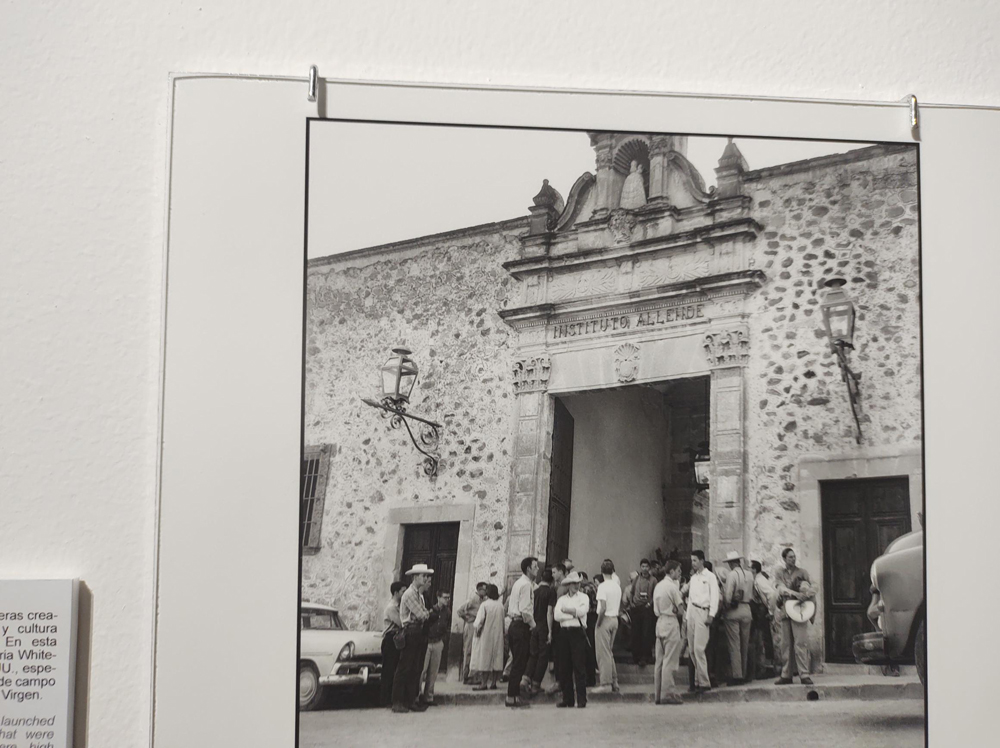
The exhibition, still at the Instituto Allende, consists of photographs taken of the art school by one Peter Olwyler between 1955 and 1968. Peter, and his family: wife, son and daughter, arrived in San Miguel in 1955, on route back to the United States after his fruitless search in Mexico City for a job as a writer or photojournalist for newspapers or business agencies. Through a set of fortuitous circumstances, Stirling Dickinson, Director of the Instituto Allende and its owners Nell & Enrique Fernandez hired Peter as the Public Relations Manager. Soon he took on duties as the instructor of photography and then, also, of creative writing. For several years in the 1990s, Peter served as Editor of Atención, and he generally contributed significantly during his 44 years of life in San Miguel.
The opening of the exhibit was called for 6pm last Wednesday. At 6:10 I set out on my bicycle. It's a very short way to the Instituto Allende from my place behind the church in San Antonio, but, especially on these irregular cobble-stones, bicycling is a much easier, and arguably safer, way to travel. Even before I arrived at the plaza in front of the church, I felt a drop. Before I got to the Ancha, there was a nascent drizzle. Still, the day before, it had also begun to rain, even with lightning and thunder, but did not continue. Then, curious about local history, having prepared and published an article on the exhibition, already committed to attending, I rode on.
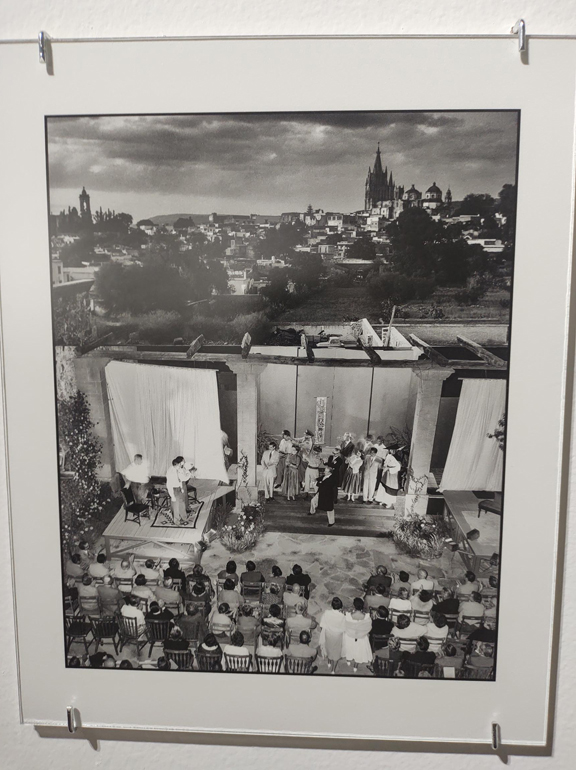
If you turn around every time it starts to rain in San Miguel, you're going to get dizzy. The locals are very matter-of-fact about the rain, nonplussed, just as they are about the cold. The cold lasts only through the early morning. Rain, our torrential afternoon thunderstorms, almost always passes in 40 minutes. I glided in traffic the short way down the Ancha, and locked up my bicycle inside the Instituto, to a bench under the covered promenade, on the other side of the entrance from where the crowd was gathered and the three-piece acoustic band was playing.
San Miguel used to be a very small town, ten blocks by ten blocks. If in the morning, you told some folks that you were having a party later in the day, by that afternoon everyone knew. Running an online event calendar, getting news of events at the eleventh hour, I have often regretted the vestiges of that spirit. Major events are regularly announced only a day or two before. I got word of this one in time to include it in my Friday newsletter, but still it had that old-time, spontaneous feel to it.

The crowd itself, having felt the drops, was all collected under the promenade. I made my way past the corner where the band was playing, and discovered that people were, in fact, cued up to enter the room where the photos were displayed. There was a man at the door with a large packet of face masks, the blue, paper variety, distributing them to the people in line, who were obediently donning them. I thought, "Oh, no. Not this again."
I did stop and chat with someone I knew who was in line, but then dutifully continued on to take my place at its end. From there, looking through the exhibit's exit doorway, I noticed with relief that a number of attendees inside were maskless. I'm not much for lines, and there was a lot of empty space inside, at least in the center of the room, so, somewhat criminally, I stepped in through the exit.
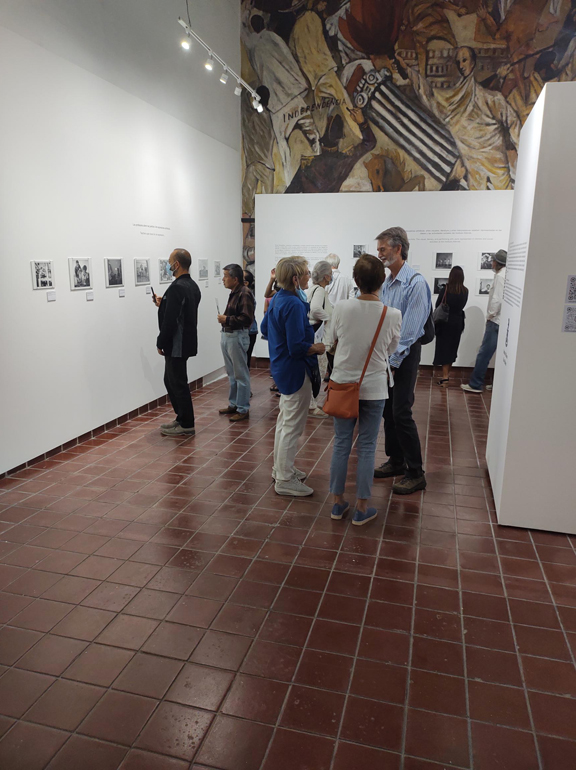
The crowd was over 95% Mexican, mostly, I supposed, current students of the art school (still in existence), and, further surmising on my part, their friends and families. Aware of having cut in line, I made myself small, staying in the middle of the room, making forays to view the photographs arrayed on the walls only when there was a space in the line-respecting people winding their way through.
The photographs were aesthetically and historically rich. Their captions were tasteful and informative. (Go see for yourself.) Outside, in the courtyard it was pouring buckets, blowing in a bit onto the promenade. We've had few, if any, rains like it this season. I lingered in the large room, taking in the exhibit at length, not expecting to find any sociable refuge in the crowd outside, now plastered along the inside wall, avoiding the rainy side of the promenade. But eventually I did exit and did find sociable refuge, speaking with a man, our backs against the inner wall, as we watched the rain come down in torrents.

Tomas, 77-years-old, was born and has lived in San Miguel his whole life, 56 years on Codo, "near Coppel," and the last 21 years resident on 28 de Abril, just a block away from where I live: "Come visit me. I'm in the first house around the corner." We spoke, quite animatedly, he had a drink in his hand, all in Spanish, for 15 minutes. Then, when the rain lightened and I thought to leave, and he stepped forward, extending his arm into the courtyard, and announced that it was still raining, we spoke, pleasantly enough, for another 15. Invited to the event by the owner of the Instituto, as I suspect many people were: "Somos muy amigos," there, standing with me aside the entrance, he spoke or nodded greetings to many people who were arriving. When I admiringly declared that he knew everyone, he smiled his assent, adding that he also remembered many of the people memorialized in the exhibit's photographs
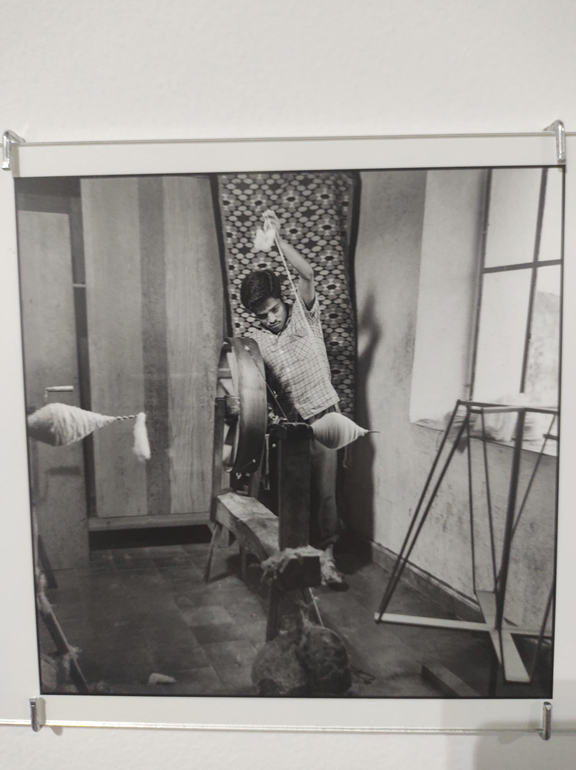
There, in that rainy interlude (I have never experienced a thunderstorm at the Instituto Allende), time and space shifted. In the exhibit I had relished photographs of the Instituto in bygone days. But here, standing in a very wet, very physical reality, was the thing itself, in all its Mexican romance and charm. I was watching the courtyard, literally held back by the rain, looking at it as I had looked at the photos in the exhibit, held back by their two-dimensionality. It wasn't exactly like watching a movie on a screen, but it had that same double, contrary sense of at once observing a separate reality and also of entering into the story, of being a part of it.
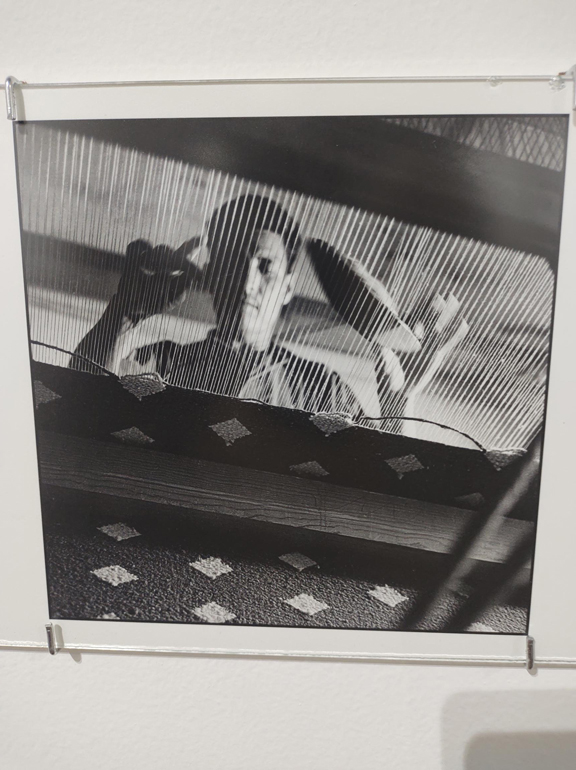
We think about things in short-hand formulas, somewhat abstractly. We experience life stereotypically, pigeon-holing existence in already-known categories. But at the heart of it all, there is a living, abiding reality. That soulful presence, the truest of truths, is too easily missed, overlooked in the business-like efficiency of our hectic brain, shut out by the guardedness of our hearts. Here in San Miguel, with its old-time architecture and charm (and perhaps those fabled pink crystals under our feet) it is easier to feel that spirit, to sense the magic. Go see the photos (in a room around the first corner to the right from the entrance). But then, stop and gaze upon the real thing. Sit down on a bench under the promenade and look out into the courtyard. If you're lucky, like I was, it will start to rain.
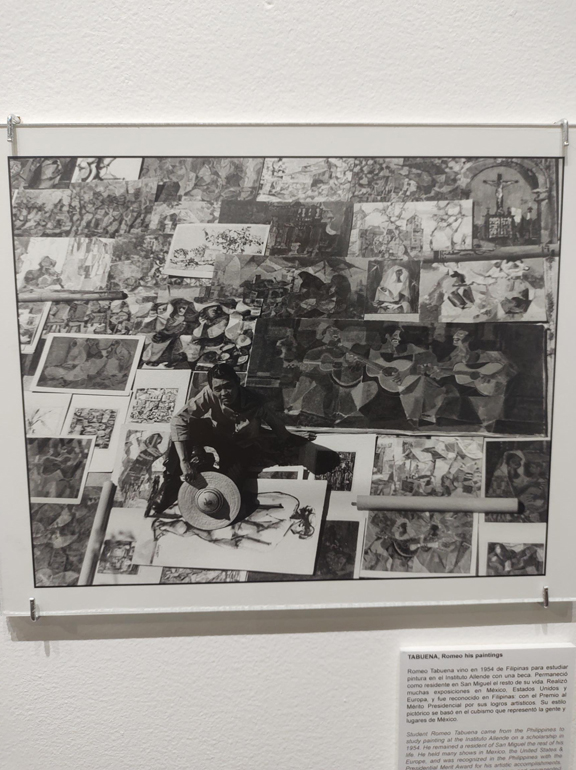 **************
**************
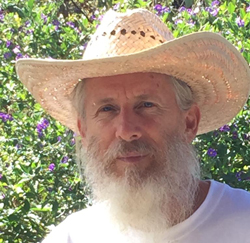
Dr. David presents Lokkal, the social network, the prettiest, most-efficient way to see San Miguel online. Our Wall shows it all. Join and add your point of view.
**************
*****
Please contribute to Lokkal,
SMA's online collective:
 ***
***
Discover Lokkal:
Watch the two-minute video below.
Then, just below that, scroll down SMA's Community Wall.
Mission

Visit SMA's Social Network
Contact / Contactar

